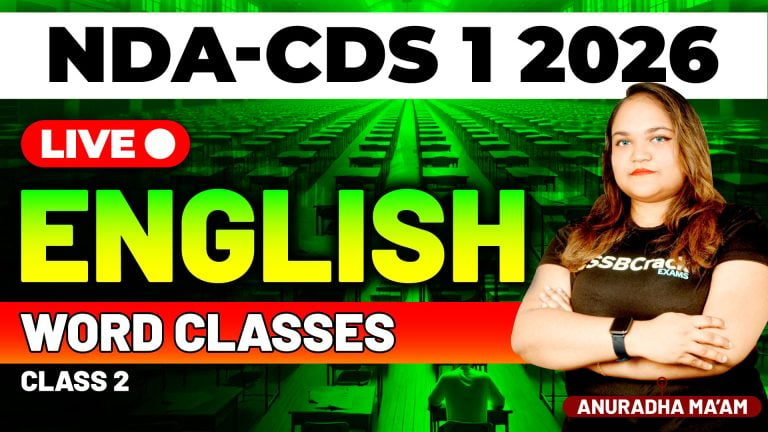Gravitation is a key topic in the Physics section of competitive exams such as the National Defence Academy and Naval Academy (NDA-NA) Exam – Paper II (GAT) and the Combined Defence Services (CDS) Exam – GK Paper. To address its significance and complexity, a recent class focused on this essential topic. The session covered core subtopics, providing conceptual clarity and practical insights to tackle related questions effectively.
Here’s a detailed account of the class, along with strategies to prepare for the topic, ensuring success in the NDA-NA and CDS exams.
Details of the Class
The session on Gravitation was comprehensive, blending theoretical discussions with practical applications. It included the following key subtopics:
1. Newton’s Law of Gravitation
The class began with a thorough explanation of Newton’s Law of Gravitation, emphasizing its universal nature and its role in understanding celestial motion. Real-life applications, such as the interaction between the Earth and the Moon, were discussed to illustrate the concept.
2. Acceleration Due to Gravity (g)
The concept of g, or the acceleration due to gravity, was explored in detail. Students learned about its approximate value on the Earth’s surface and how it varies with altitude, depth, and latitude.
3. Factors Affecting g
An engaging discussion on the factors influencing g helped students understand its dependence on planetary mass, radius, and rotational effects. MCQs based on practical scenarios, such as the change in g at the poles versus the equator, were solved to reinforce learning.
4. Kepler’s Laws of Planetary Motion
Kepler’s Laws formed a vital part of the class. The three laws were explained with examples of planetary orbits and how these laws govern the motion of celestial bodies. Students practiced questions focusing on their implications and applications.
5. Satellites
The topic of satellites delved into their types (geostationary and polar) and functions. The mechanics of satellite motion, including orbital speed and the importance of stable orbits, were covered. Real-world applications, such as GPS and communication satellites, were highlighted.
6. Escape Speed
The session concluded with a discussion on escape speed, or the minimum speed required for an object to overcome the gravitational pull of a celestial body. Students explored how this concept applies to launching spacecraft and the conditions that affect escape speed.
Strategies to Prepare for Gravitation
To master this topic and excel in competitive exams, it’s crucial to adopt a systematic approach. Here are some effective strategies:
1. Understand the Fundamentals
Start with a solid understanding of the basic principles:
- Grasp the concept of universal gravitation and how it applies to various systems.
- Familiarize yourself with the relationship between force, mass, and distance as outlined by Newton’s law.
- Visualize real-world applications to strengthen your comprehension.
2. Analyze Variations in g
Pay special attention to the factors affecting g:
- Study its variation due to altitude, depth, and latitude.
- Use examples to understand the rotational impact on g at different locations on Earth.
3. Master Kepler’s Laws
Understand the essence of Kepler’s Laws of Planetary Motion:
- Practice questions involving elliptical orbits and orbital periods.
- Relate these laws to real-world phenomena, such as the motion of planets and artificial satellites.
4. Focus on Satellite Motion
Given the increasing significance of satellites, invest time in understanding:
- Types and uses of satellites (e.g., geostationary and polar).
- Applications of satellite technology in communication and navigation.
5. Solve Application-Based Questions
Application-based problems are common in competitive exams. Practice questions related to:
- Escape speed and its dependence on planetary characteristics.
- Practical implications of g variations and satellite orbits.
6. Use Visual Aids
Diagrams and illustrations can simplify complex topics. For instance:
- Draw orbits to understand Kepler’s laws.
- Use free-body diagrams to analyze forces acting on objects under gravity.
7. Practice Previous Years’ Papers
Analyze the pattern of questions from previous NDA-NA and CDS exams. Identify high-priority topics, such as satellite motion and variations in g, and focus on these areas.
8. Take Mock Tests
Simulate exam conditions by solving full-length mock tests. This helps improve time management and exposes you to a variety of question types.
9. Revise Regularly
Gravitation is a concept-heavy topic, so regular revision is crucial. Revisit key formulas, principles, and solved problems to ensure retention.
Conclusion
The recent class on Gravitation provided a strong foundation for students preparing for the Physics section of the NDA-NA and CDS exams. By covering key concepts like Newton’s Law of Gravitation, acceleration due to gravity, Kepler’s laws, and satellite motion, the session ensured a holistic understanding of the topic. The inclusion of MCQ practice further honed problem-solving skills and exam readiness.
To excel in gravitation, aspirants should focus on building conceptual clarity, solving application-based problems, and revising regularly. With consistent effort and strategic preparation, success in this topic—and the exams—is within reach.
Stay motivated, practice diligently, and aim for the stars—quite literally in the case of gravitation! Good luck!

















